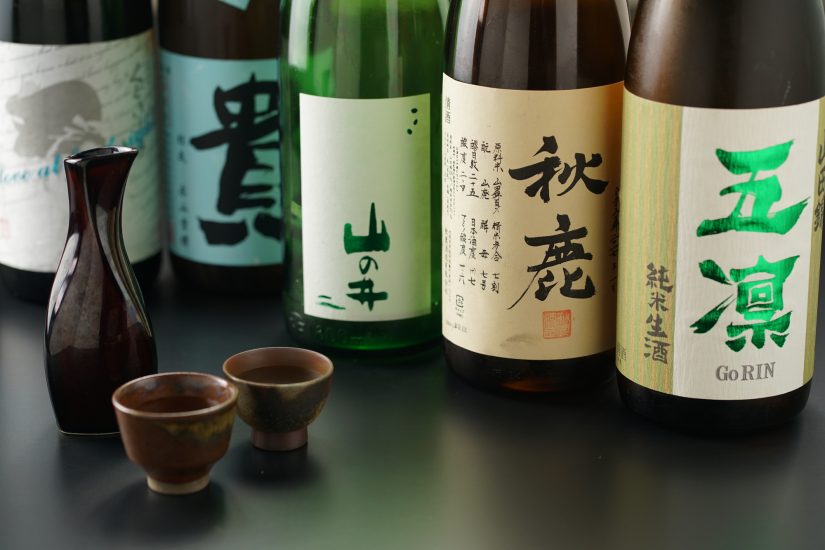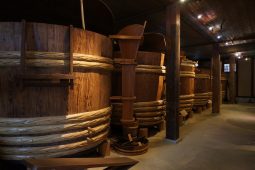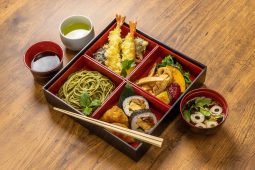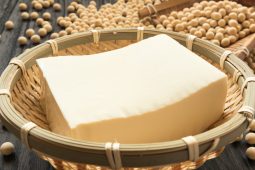Sake labels are often beautiful but can be daunting on first look. They are usually centered around ornate calligraphy, with complex, arcane descriptions that require a certain background to contextualize. Luckily for you, I am here to give you that context! So come with me, let’s demystify these labels.
What’s in a Name?
As I mentioned, the name of the sake will often be written in ornate calligraphy in the center of the label. Unfortunately, there’s not much I can do to help with reading these, because apart from knowing the kanji, the style of writing often makes it difficult even for native speakers to read. Luckily, the makers usually (not always) include the name of the sake in katakana or hiragana, and sometimes even in romaji, so the basic name is still sometimes accessible.
So, once you’ve figured out the name of the sake, what does it mean? Well, like most product names, it doesn’t mean much apart from the general brand image the maker might be trying for. There are a lot of unique sake names around (酔鯨 Suigei, for example, means “drunken whale”), but there are also a lot of rather common motifs found in sake naming. These traditional styles of names often use references to literature or common concepts in Japanese culture to create an attitude in the consumer. Here are some examples of common words used in sake names, their meaning, the concept or reference behind them, and some example brands.
| 菊, きく, Kiku | Chrysanthemum | The chrysanthemum represents the Japanese imperial family, and thus connects the sake to royalty, majesty, and tradition. | Kikumasamune, Kikusui |
| 鶴, つる, Tsuru | Crane | The crane in Japanese tradition is a general symbol of goodness: long life, good luck, peace, and happiness. | Bochotsuru, Senzuru, Hakutsuru |
| 正宗, まさむね, Masamune | A person’s name, but has nuances of honesty and forthrightness | This is a complex one, because in many circles Masamune simply refers to good sake (or good swords), so it became a self-reinforcing trend. It might have to do with a complicated play on words and pronunciation in Japanese. | Marushin Masamune, Sakura Masamune |
| 美人, びじん, Bijin | Beautiful Woman | Creates and image of beauty and elegance. | Nanbu Bijin, Toyo Bijin |
| 福, ふく, Fuku | Happiness, Good Luck | General positivity. | Choyo Fukumusume, Raifuku |
| 娘, むすめ, Musume | Young woman, daughter | Creates an image of delicacy and grace. | Wakamusume, Choyofukumusume |
| 水, みず・すい, Mizu/sui | Water | Not only is it a natural reference, but the connotation of water is one of purity | Kikusui, Ippakusuisei, Takashimizu |
Details, Details
There are a number of details that are required by law on every sake label, and a few others that are included for purposes of tradition, marketing, or both. These can have a direct relationship to the quality and flavors of the sake in the bottle, so it’s a good idea to try and remember some of these.
Here is a list of terms you might see on these labels, their pronunciation, and what they mean for the sake.
| 上撰 | じょうせん, Josen | “Top Selection.” This is a remnant of an outdated classification system for sake, representing a higher class. Now, however, it simply means this sake is 普通酒 Futsushu, and not one of the special premium sakes like ginjo. |
| 原酒 | げんしゅ, Genshu | Undiluted “cask strength” sake. |
| 無濾過 | むろか, Muroka | Unfiltered sake (not run through a carbon filter) |
| 生 | なま, Nama | Indicates sake that has not gone through heat treatment (either 0 heat treatment, or skipped one stage of heat treatment) |
| 本醸造 | ほんじょうぞう, Honjozo | A legal classification, made with added brewer’s alcohol (before pressing), and rice polished to at least 70% |
| 純米 | じゅんまい, Junmai | A legal classification, made only with rice, yeast, koji and water. Can be combined with other classifications. |
| 吟醸 | ぎんじょう, Ginjo | A legal classification, made with rice polished to at least 60% and brewed in a specific style. |
| 大吟醸 | だいぎんじょう, Daiginjo | A legal classification, made with rice polished to at least 50% and brewed in a specific style. |
Legal classifications (特定名称 tokuteimeisho) are required by law on the label. If none of those are included, then the sake is technically a 普通酒Futsushu (regular sake). That is not necessarily a bad thing! To meet the legal classifications, brewers must also include the specifications to meet it, meaning mill ratio (精米歩合, seimaibuai), ingredients, and so on.
Other legally required information are the ingredients, the alcohol level (アルコール分), and the production date (the year and month the sake was shipped, not made!). Another date often seen is the BY, or Brewing Year.
I hope this helps clear up some of the mystery around those beautiful sake labels! In future articles, we’ll look at other, less common terms as well.








